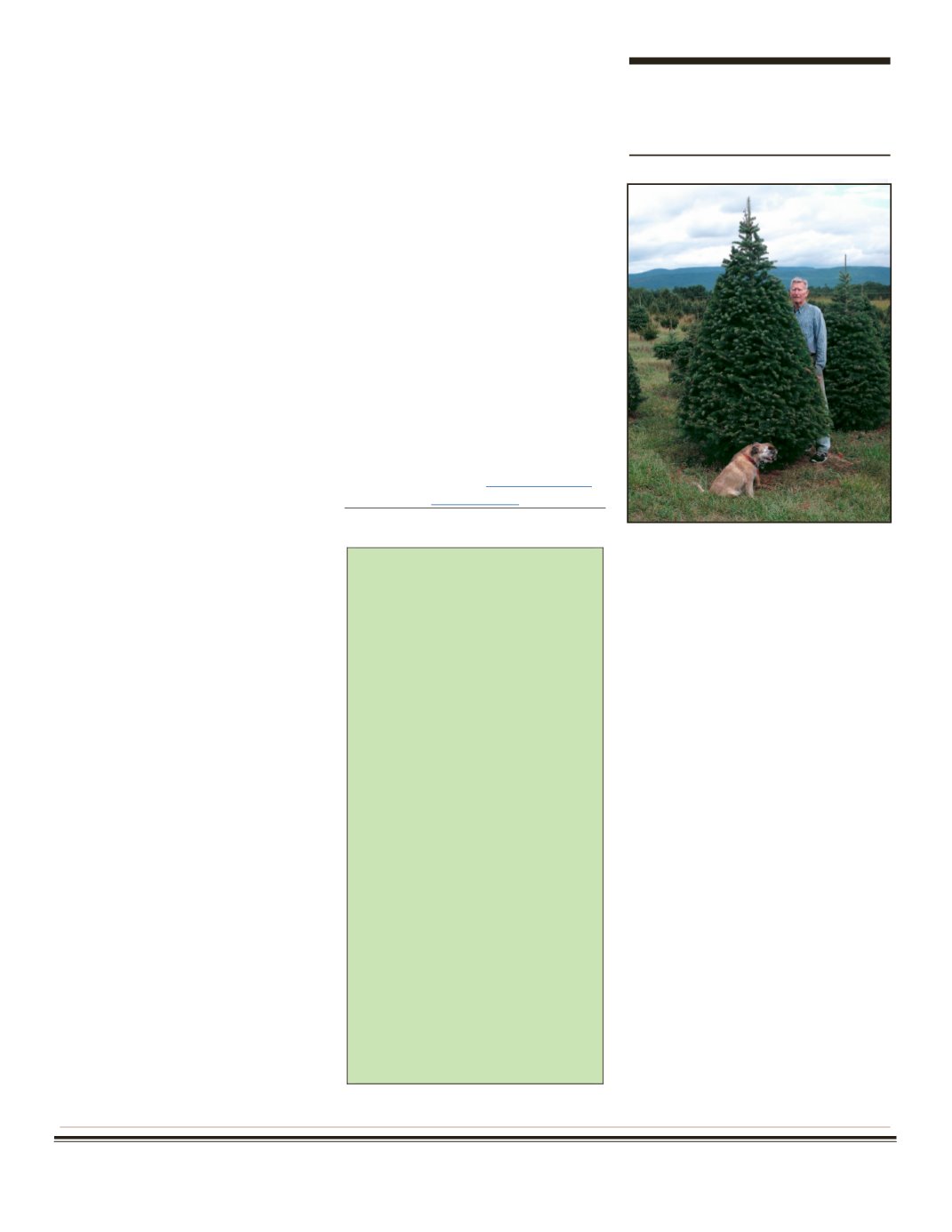

6 |
VCTGA News Journal
‒
Spring 2017
Page 6
VCTGA News Journal –Spring 2017
private sources which these nursery-
men collect the seed.
Land Availability
Development is consuming land
faster than ever. What was once a
pristine, open farmland is now subdi-
vision or commercial property.
Where can a reliable seed source be
planted to offset the effects of devel-
opment? It seems remote locations
away from growing urban areas may
be the best answer or on government
property such as a state or national
forest. Shortages are sure to occur if
development continues at the pace its
going.
Alternatives?
What is the potential of other seed-
ling sources for availability? The ef-
forts of micro propagation or tissue
culture provides great potential as an
alternative. Instead of seed cone pro-
duction a petri dish in a lab can pro-
duce a new plant grown under a clean
and enclosed environment. At our
state universities, research is ongoing
with Fraser fir and other spruce and
pine species to develop micro propa-
gated material. This has been suc-
cessfully done with loblolly pine for
eventual field planting for timber
production. Another thing I learned is
some local Christmas tree growers
are also beginning to produce their
own seedlings and will no doubt be a
source for others to buy.
Looking Ahead
If this past Christmas tree selling sea-
son was an indication as to the phe-
nomenal sales that occurred, we as
growers need a reliable seed/ seed-
ling/transplant source to continue
planting one to three trees for every
one that is cut. Good reliable seed or-
chards, private ownership of seedling
production and possibly micro prop-
agated material to be available will
insure a plentiful seedling source for
some time. We have seen these gluts
in the past but with careful planning,
sowing seed now and not all at once
will carry us through to avoid future
gluts and then only to see a lack of
supply later.
Clean, disease free plant material will
give us better survivability and fewer
mortal situations. I plan to use fungi-
cides to dip the roots and foliage to
hopefully kill off any existing patho-
gens when the plants arrive. To avoid
shortages, it is hopeful that efforts
can be made to avoid over planting,
that could produce a glut, have relia-
ble seed orchards and the use of clean
or fumigated material at planting
time. With these practices, I believe
we can overcome shortages whether
it be good or adverse economic times.
Provided by Tommy Naylor, North Lake
Christmas Tree & Nursery, Benson, NC
& VCTGA Director
tenaylor07@em-
barqmail.comSave the Date!
Virginia Christ-
mas Tree Growers
Annual Meeting
and Conference
August 10-12, 2017
Wytheville Meeting Center
Will there be an
Adequate Supply
of Trees
for the Future?
Dr. Earl Deal,
Smokey Holler
Tree Farm,
has some insights
No Fertilizer for 16
Years and Soil Nutrient
Levels are Unchanged
By Steve Rhoades
This is a dirty story, but it needs to be
told. The purpose of the story is to ex-
amine the proposition that growing
Christmas trees will significantly re-
duce the nutrient content of the soil
over time. If so, it would presumably
be necessary to add nutrients period-
ically with some kind of fertilizer to
maintain an adequate level of nutri-
ents for growing healthy, attractive
trees. The impetus for the story stems
from a couple of comments I re-
ceived about earlier articles of mine
on fertilizing trees that appeared in
the VCTGA newsletter. It is useful to
provide a little background to put this
article in context. In the earlier arti-
cles, I looked at established
knowledge in horticulture and soil
science, discussed some systematic
studies of fertilizing trees, and de-
scribed my own experiments. As I re-
ported, the established knowledge in-
dicates that trees take up relative little
nutrients compared to field crops,
and natural forces continually add
nutrients to the soil. About a half-
dozen studies I read found that ferti-
lizing Christmas trees with nitrogen
generally had little beneficial effect,
















